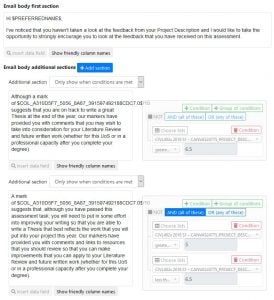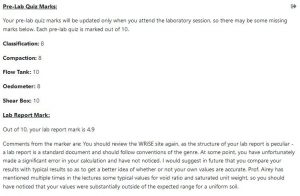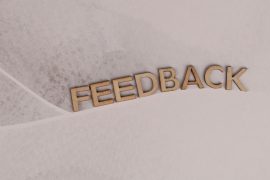While there’s admittedly a lot that you can do in an Excel spreadsheet (like pulling together different sources of information with vlookup, late penalties based on date subtraction, etc.), ask yourself the following questions: “Can Excel store files (photos, pdfs, etc.)? Can it get live information from tutors during class? Will I have time to pull together all of my Excel spreadsheets (or is it just another task to add to my ‘things to do later’ list)?”
The answer is, “unfortunately, no!”
One of the biggest drawbacks of a spreadsheet is that it’s hard to store information in a single location. In the past, I’d have a few spreadsheets containing marks and attendance lists from tutors or demonstrators. While this might sound manageable for a small class, imagine you’re teaching a class of 300+ students, have 20 tutorials plus up to 5 lab sessions running each week and have to update the attendance list on a weekly basis to account for students who have missed a lab session—maintaining a set of spreadsheets can quickly become impossible!
So what’s the alternative? The Student Relationship Engagement System (SRES)! It’s an online database—you can think of it as a spreadsheet that can store any type of data—that is a serious contender for “best teaching tool you’ve (n)ever used”.
Why should you start using the SRES?
It’s a fantastic tool to personalise your interactions with students—you can learn more about what the SRES can do and also check out some of the amazing ways academics have used it in their teaching. If you’ve been thinking about how you might give your emails that personal touch or get to know your new students a bit better, now is a great time to think about getting into the SRES.
You can start off as simple as you like—when I first started, my SRES list was just an attendance list that I could easily share with my tutors and demonstrators—and build up your list gradually. If you can put data into a spreadsheet, working in SRES really isn’t any harder!
How do you get started?
One of the best things about the SRES is that you don’t need much to get started—you only need to request administrator access and log in!
Once you’re in the SRES, you can add as little or as much information as you’d like – and a lot of the information is readily available. At the start of semester, I typically create a new ‘list’ (which is the SRES-equivalent of an online spreadsheet), sync in Canvas data, and make a short survey to get to know my students better.
Create a new list
Ask the SRES to draw in Canvas data (e.g. enrolments)
Make a short survey to ask my students for photos and to tell me about themselves
Personalise the learning experience for students
Setting up a good basic SRES list now will make it a lot easier to build it into a resource that you’ll want to keep using throughout the semester. As the semester goes on, you can use this information to:
- help your tutors take attendance by including photos/other student information on the roll
- send out personalised emails to your students
- create a student portal to highlight ongoing feedback or additional resources to your students
And for those who are truly efficient (possibly read: lazy), it’s also easy to recycle your lists year on year by copying the old list and linking sources of new information to existing columns.
Want to learn more?
- See how others are using the SRES to personalise the student experience
- Visit the official SRES website
- Ask for advice on the SRES Yammer group









2 Comments